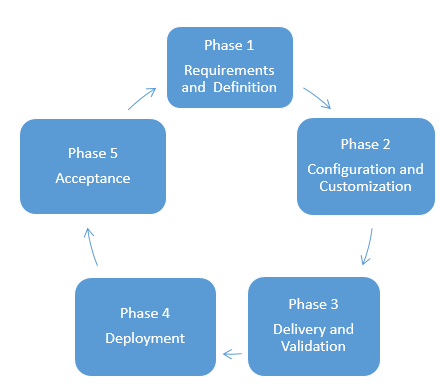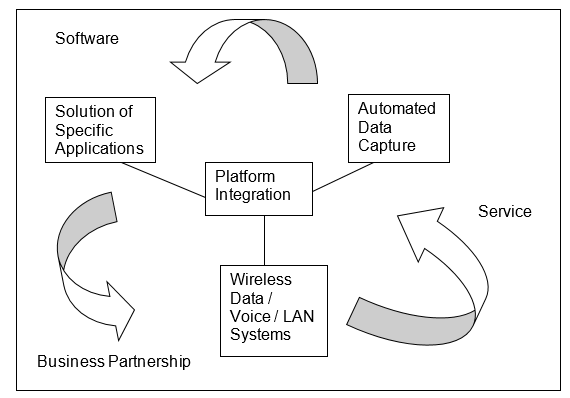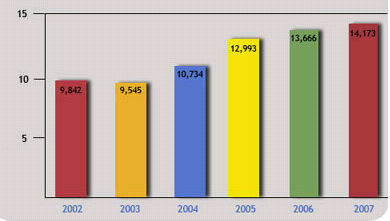Introduction
The level three analysis of the London Ambulance Service after its “a complete nightmare” will require thorough analysis of the reasons and consequences of the failure, backed with the templates charts and diagrams. Originally, the study is divided into three parts ‑ System and Problems, Analysis and Possibilities, Recommendation and Justification. Originally, such the all round approach will help to held the thorough analysis of the managerial problems, which are regarded to be the main drawback of the LAS.
Level three analysis presupposes the study of the following factors: Customers, Products and services, Work Practices, Personnel, Information, Technologies, Environment, and the Work System as a whole. Moreover, various aspects of these factors, and different angles of the allover problem should be regarded and incorporated into the present research.
System and Problems
To begin with, it should be emphasized that the matters of analyzing the System and Problems, which this system experienced are closely associated with the analysis of the project implementation and the problems of managing the IT sphere in governmental non-profit organizations.
Systematic analysis of the London Ambulance Service should be arranged in accordance with the checklist stated in the introduction chapter.
Customers
The system, originally, depends on the needs and requirements of the customers, who require instant medical assistance. Thus, the main aim of the analyzed structure is to provide the necessary help, by locating and sending the Ambulance cars to the necessary address. The problem is related with the implementation of the computerized system for processing the emergency calls, thus, lots of calls stayed unsatisfied, which caused serious consequences for the health and lives of the customers.
Products and services
The services of the London Ambulance Service entail the quick response for the emergency calls, the adequate response for this call, finding the nearest ambulance to the destination address, or locating the address, if the person is unable to tell it, and then sending the ambulance to the stated address. The maximum time for all these actions stated by the statute of the organization is 3 minutes max. When the time is exceeded, the quality of the services is regarded to be decreased. The problem of the case study is that some calls were not replied, or processing took up to 30 minutes.
Work Practices
The work practices presupposed the processing of the calls in the manual regime, while the new system was aimed at decreasing the routine work of every dispatcher, thus, allowing them to pay more attention to the customers, who require psychological maintenance and adequate responses for their problems. The problem, which appeared in the system made the adequate responses impossible.
Personnel
The personnel of the LAS is generally supposed to great stress while processing calls. They often face the danger of death, or at least hear the prays, claiming for salvation of people’s lives, while the personnel has to locate the ambulance, give the request and send the car to the stated address. The Automatic system was aimed at decreasing these stresses, nevertheless, the improper project management made the system another stress for the workers, which stopped the accomplishment of their direct assignments.
Information
The information and informational flow are the main resources of the London Ambulance Service. The adequacy and timeliness of the data processing may either save or take one’s life. Thus, the timeframe of three minutes is not taken from nowhere. The appeared problem not just slowed down the information flow – it stopped it completely, and serious efforts were required to launch it again.
Technologies
The used technologies entail the phone equipment, Global Positioning System and the computer data base for processing and registering calls. The data base was updated manually, while the new system presupposed the automatic update and processing of the information, and finding of the nearest ambulances.
Environment
The environment of the system is the medical sphere, where every customer should be paid as much attention as he or she requires, as the specification of the sphere obliges to make everything for saving people’s lives. The problems with the environment were not observed, nevertheless the appeared problem violated the connection with this environment.
Work System as a whole
The general analysis of the system and the appeared problem is associated with the managerial problems and the inability to implement the new working principles by restructuring the operational structure of the London Ambulance Service system.
The template for the analysis, which should be used is the SWOT matrix, which is regarded to be the universal tool for analysis and finding the problem. Two matrixes should be represented: before the implementation of the project, and after it.
Before.
After (The analysis is made on the basis of the realities, but not on the basis of projected effectiveness).
As it is stated, the threats and weaknesses aggravated, while opportunities and strengths disappeared at all. Surely, the project was not aimed at aggravation of the situation, nevertheless, the proper project management would resolve these issues.
Analysis and Possibilities
In accordance with the stated checklist, it should be emphasized that the analysis of the problem and the review of the possibilities, engaged in the project implementation should be made from the perspective of project management and implementation of the structural changes into the operational structure of the company.
The end users of the work system provide the best service given the operational environment created by the work practice. The operational units of the work system failed to achieve set goals and this caused disruption to the end users, and thus this organization aspect was lacking in quality service provisions under the new working system. The third level customer of the working system also failed, the developers of the working system failed to provide a working product, which reflects in end user service provision, and the governmental agencies failed to ensure that the new working system was of an operational standard before the activation of the work system.
In the light of the fact that the main problem is associated with project management, it should be emphasized that the implementation of the project should be divided into five stages:

These five stages are the general flow of any project implementation. The first phase is the detailed plan, which describes the requirements for the project, and the plan for the necessary structural modifications, which will be required for the implementation of the project.
Phase 2 is the elaboration of the project, which is the initial step of the practical implementation of the plan. Customization presupposes the application of the working realities towards the plan.
Phase 3. Validation of the prepared project before its deployment should also entail testing for mistakes, and within the simulated environment. The implementation of IT projects has its own particularities, which require detailing of this phase:

The following phase is the practical implementation of the tested project. This also includes the staff training and qualification improvement, as the team will be shortened, and the rest will have to cope with the increased amounts of work, nevertheless, part of this work will be automatized. This stage also includes stabilization, testing and launch of the project. This stage requires the highest responsibility, as testing and stabilization of the system is the last opportunity to avoid crucial mistakes and bugs in the work of the system.
Phase 5 is the final acceptance of the project by management and staff.
The analysis of the “Complete Nightmare” as it is described in the case study reveals that the death rates exceeded the rates for the similar periods at least twice. The diagram shows the average death rate per month (the rates for 2008 are unavailable). Thus, 20 deaths for a single night appear to be the real Nightmare.

Recommendation and Justification
The recommendations, which should be given to the London Ambulance Service are related with the improvement of the managerial system, and HR strategies. The fact is that, these problems could be avoided if the Ambulance Service management took care of the project development, and assigned a person responsible for this project. The results show that the project was implemented without proper plan, and without any preparation and preliminary research of the situation.
The failure of the project does not signify that the dispatch department will not require the improve and automation of their work, nevertheless, the management of the Ambulance service should take into consideration their previous mistakes, analyze them, and make everything possible in order to avoid them. Thus, there will be strong necessity to improve the technical side of the project, as the case study revealed essential drawbacks in this aspect.
Then, the management should take care of the staff training, and their qualification improvement in general. In the light of the fact that the dispatching team will be shortened, it should be emphasized that the remaining team members will have to deal with the larger amounts of calls and information processing. On the other hand, IT specialist should be added to the team. He or she will be solving the problems associated with software malfunctioning.
As for the templates, it should be emphasized that these have been stated in the previous chapters, consequently, the recommendation will be to follow the stated templates and principles.
The implementations should be staggered to allow for a seamless transition. Education first followed by the introduction of the system with override. All the organizations are aiming to improve the quality of the provided services, and as long as consultation and information is free and transparent the implementation of the work system will have no significant issues. Nevertheless, managers should follow strict principles, arrange experience exchange meetings for managerial and performance personnel, and, surely follow the tips and principles, which business literature offers, as the implementation of the project is the matter of business issues, independently on the origin of the organization.
Conclusion
Finally, it should be stated that the improvement of any organizational structure is the matter of thorough preparation and preliminary research. Moreover, if the project is associated with Ambulance and the lives of people, who address these services, the process requires high responsibility levels, as mistakes may be fatal.
The multi angle level three analysis revealed the main problems of the project implementation and management, and, the generated recommendations are regarded to be the essential steps for the further improvement of the structure and organizational performance.
Reference List
Atler, S. 2006, ‘The work system method’, Work System Press, Larspur.
